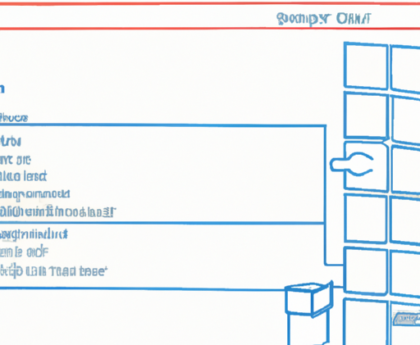“Discover the facts about Australia’s government – all in one place!”
Introduction
The Australian Government is the federal government of the Commonwealth of Australia, a federal parliamentary constitutional monarchy. It is also commonly referred to as the Canberra government or the Commonwealth government. The government is composed of three branches: the executive, legislative, and judicial branches. The executive branch is composed of the Governor-General, the Prime Minister, and other Cabinet ministers. The legislative branch is composed of the Parliament of Australia, which includes the Senate and the House of Representatives. The judicial branch is composed of the High Court of Australia and other federal courts. The government is responsible for the administration of the country, including the economy, defence, foreign affairs, social security, health, education, and infrastructure.
Exploring the Role of the Australian Government in the Economy
The Australian Government plays a significant role in the economy, with its policies and actions having a direct impact on the nation’s economic performance. The government is responsible for setting the overall direction of the economy, and for providing the necessary resources and support to ensure that the economy remains strong and resilient.
The government’s primary role in the economy is to create and maintain an environment that is conducive to economic growth and development. This includes setting fiscal and monetary policies, such as taxation and interest rates, which can influence the level of economic activity. The government also provides incentives for businesses to invest and create jobs, and to encourage innovation and entrepreneurship.
The government also plays an important role in providing public services, such as health care, education, and infrastructure. These services are essential for the functioning of the economy, and for providing a high quality of life for citizens. The government also provides social security and welfare payments to those in need, which helps to reduce poverty and inequality.
The government also plays a role in regulating the economy, by setting rules and regulations that ensure that businesses operate in a fair and competitive manner. This helps to ensure that the economy remains efficient and productive, and that consumers are protected from unfair practices.
Finally, the government plays an important role in international trade. It negotiates trade agreements with other countries, and works to ensure that Australia’s exports are competitive in the global market. This helps to create jobs and stimulate economic growth.
In summary, the Australian Government plays a vital role in the economy, by setting the overall direction of the economy, providing public services, regulating the economy, and engaging in international trade. Its policies and actions have a direct impact on the nation’s economic performance, and its role is essential for ensuring that the economy remains strong and resilient.
An Overview of the Australian Tax System
The Australian tax system is a complex and comprehensive system of taxation that is designed to fund the government’s expenditure and provide services to the public. It is a progressive system, meaning that the more income an individual earns, the higher the rate of tax they pay. The system is administered by the Australian Taxation Office (ATO) and is based on the principles of fairness, equity and efficiency.
The Australian tax system is divided into two main categories: direct and indirect taxes. Direct taxes are taxes that are paid directly to the government, such as income tax, capital gains tax and fringe benefits tax. Indirect taxes are taxes that are paid indirectly, such as goods and services tax (GST), customs duty and excise.
Income tax is the main source of revenue for the government and is levied on individuals and companies. It is calculated based on the taxable income of the individual or company. The rate of tax depends on the amount of income earned and is progressive, meaning that the higher the income, the higher the rate of tax.
The GST is a consumption tax that is levied on the sale of goods and services. It is charged at a flat rate of 10% and is applied to most goods and services. The GST is collected by the ATO and is then distributed to the states and territories.
The Australian tax system also includes a range of other taxes, such as stamp duty, land tax, payroll tax and superannuation. These taxes are designed to raise revenue for the government and to encourage certain activities, such as saving for retirement.
The Australian tax system is constantly evolving and is subject to change. The government regularly reviews the system to ensure that it is fair and equitable and that it meets the needs of the community. The ATO is responsible for administering the system and ensuring that taxpayers comply with their obligations.
Understanding the Australian Constitution and Its Impact on Government
The Australian Constitution is the fundamental law of the Commonwealth of Australia. It is the basis for the legal system and the framework of government in Australia. It sets out the powers of the federal government, the states and territories, and the rights of citizens.
The Constitution was drafted in the late 19th century and came into effect in 1901. It was based on the British Westminster system of government, but with some modifications to suit the Australian context. The Constitution is made up of several parts, including the preamble, the body of the document, and the schedules.
The preamble sets out the purpose of the Constitution, which is to “establish the Commonwealth of Australia as a constitutional monarchy, with a federal system of government”. It also outlines the principles of responsible government, the rule of law, and the separation of powers.
The body of the Constitution sets out the powers of the federal government, the states and territories, and the rights of citizens. It also outlines the structure of the federal government, including the executive, legislative and judicial branches.
The Constitution also sets out the powers of the states and territories. These include the power to make laws in certain areas, such as health, education and transport. The states and territories also have the power to raise taxes and borrow money.
The Constitution also outlines the rights of citizens. These include the right to vote, the right to freedom of speech and the right to a fair trial.
The Constitution has a significant impact on the Australian government. It sets out the powers of the federal government, the states and territories, and the rights of citizens. It also outlines the structure of the federal government, including the executive, legislative and judicial branches.
The Constitution is the foundation of the Australian legal system and the framework of government in Australia. It is the basis for the laws that govern the country and the rights of citizens. It is also the basis for the system of responsible government, which ensures that the government is accountable to the people.
The Constitution is an important document that has shaped the Australian government and legal system. It is a living document that is regularly amended to reflect the changing needs of the nation. It is a document that has had a profound impact on the way Australia is governed and the rights of its citizens.
Exploring the Different Levels of Government in Australia
Australia is a federal parliamentary democracy and constitutional monarchy, with the Queen of Australia as its head of state. The government of Australia is divided into three levels: federal, state, and local. Each level of government has its own responsibilities and powers, and all three levels work together to ensure the smooth running of the country.
At the federal level, the Australian government is responsible for matters such as foreign policy, defence, immigration, trade, taxation, and social security. It is also responsible for the regulation of industries, the protection of the environment, and the provision of services such as health care and education. The federal government is made up of the Prime Minister, the Cabinet, and the Parliament.
At the state level, the government is responsible for matters such as health, education, transport, and law and order. Each state has its own constitution and its own parliament. The state governments are responsible for the implementation of federal laws and policies, as well as for the provision of services such as roads, hospitals, and schools.
At the local level, the government is responsible for matters such as planning, waste management, and local infrastructure. Local governments are made up of councils, which are elected by the people in their local area. Local governments are responsible for providing services such as libraries, parks, and waste collection.
In Australia, all three levels of government work together to ensure the smooth running of the country. Each level of government has its own responsibilities and powers, and all three levels are essential for the functioning of the country.
Examining the Role of the Australian Parliament in the Political System
The Australian Parliament plays a vital role in the nation’s political system. It is the primary legislative body of the Commonwealth of Australia, and is responsible for making laws that govern the country. The Parliament is made up of two Houses: the House of Representatives and the Senate.
The House of Representatives is the lower house of the Parliament and is made up of 150 members, each representing an electoral division. The members of the House of Representatives are elected by the people of Australia in a general election. The House of Representatives is responsible for introducing and debating legislation, and for approving the government’s budget.
The Senate is the upper house of the Parliament and is made up of 76 senators. Twelve senators are elected from each of the six states, and two senators are elected from each of the two territories. The Senate is responsible for reviewing and amending legislation that has been passed by the House of Representatives.
The Parliament is responsible for making laws that affect the lives of all Australians. It is also responsible for scrutinising the government’s actions and policies, and for holding the government to account. The Parliament is also responsible for approving the government’s budget and for debating and voting on important issues.
The Parliament is an important part of the Australian political system. It is the primary legislative body of the Commonwealth of Australia, and is responsible for making laws that govern the country. It is also responsible for scrutinising the government’s actions and policies, and for holding the government to account. The Parliament plays a vital role in ensuring that the government is accountable to the people of Australia.
Investigating the Role of the Australian Judiciary in the Legal System
The Australian judiciary plays a vital role in the legal system, ensuring that the law is applied fairly and impartially. The judiciary is responsible for interpreting and applying the law, and for ensuring that justice is served. This article will explore the role of the Australian judiciary in the legal system.
The judiciary is made up of judges, magistrates, and other judicial officers. Judges are appointed by the government and are responsible for hearing and deciding cases in the higher courts. Magistrates are appointed by the state governments and are responsible for hearing and deciding cases in the lower courts. Other judicial officers include coroners, registrars, and tribunal members.
The judiciary is responsible for interpreting and applying the law. Judges must interpret the law in accordance with the Constitution and other legislation. They must also consider the facts of the case and the arguments of the parties involved. Judges must also ensure that the law is applied fairly and impartially.
The judiciary is also responsible for ensuring that justice is served. Judges must ensure that the rights of all parties involved in a case are respected and that the law is applied in a fair and just manner. Judges must also ensure that the punishment imposed is appropriate for the crime committed.
The judiciary is also responsible for upholding the rule of law. Judges must ensure that the law is applied consistently and that all parties involved in a case are treated equally. Judges must also ensure that the law is applied in a way that is consistent with the values of the Australian community.
The judiciary is also responsible for protecting the rights of individuals. Judges must ensure that the rights of individuals are respected and that the law is applied in a way that is consistent with the principles of justice and fairness. Judges must also ensure that the rights of individuals are not violated by the government or other individuals.
In conclusion, the Australian judiciary plays a vital role in the legal system. Judges are responsible for interpreting and applying the law, ensuring that justice is served, upholding the rule of law, and protecting the rights of individuals. The judiciary is essential for ensuring that the law is applied fairly and impartially, and that justice is served.
Conclusion
The Australian Government is a strong and stable government that is committed to providing its citizens with the best possible services and support. It is a government that is constantly striving to improve the lives of its citizens and to ensure that all Australians have access to the same opportunities and rights. The Australian Government is a leader in the global community and is committed to promoting peace, security, and prosperity for all.




